Changing the flooring of any kitchen can be such a hassle. Little wonder a lot of folks get to change pieces of furniture in their homes, decorations, and other accessories but never get to replace their kitchen’s worn-out floor.
The reasons for this range from a lack of knowledge of the intricacies of the floor-changing process, to the fear of the (perceived) exorbitant cost of changing the home floor. In this article, you will find 12 kitchen flooring ideas, the cost as well as the pros and cons of each.
1. Hardwood
There is a reason most American homes consider hardwood. It is, perhaps, one of the simplest kitchen flooring ideas you could ever stumble on. To install it, you just have to nail the wooden planks to a wood subfloor.
Hardwood can come with widths between 1.5 to 2.5 inches and can be made from any type of wood. Hardwood is also divided into finished or unfinished wood.
It is usually better, although more expensive, to install finished flooring. They also last longer than unfinished wood flooring. However, if you decide to go with unfinished flooring, then you have to sand and finish it later on yourself.
Pros:
- It can blend it perfectly with any preexisting décor of your kitchen; even your range hood can fit perfectly with it.
- Durability: It is long-lasting and can be refinished as much as five times. This can be an excellent way to remove scratches from the flooring.
- It is DIY friendly. You will not need a lot of help installing the flooring yourself.
- Hardwood flooring is pretty easy to clean. You only have to sweep it when necessary and use a mop too when the occasion demands.
Cons:
- They are affected by weather changes and may shrink or swell depending on the prevalent weather.
- You may have to refinish regularly. This may cost a little more in the long run.
- You have to be careful while making use of hardwood flooring.
Cost:
The flat rate is between $3 to $8 per square foot. If you are looking for something more exotic, you may want to go for exotic wood, which costs up to $14 per square foot.
2. Engineered wood
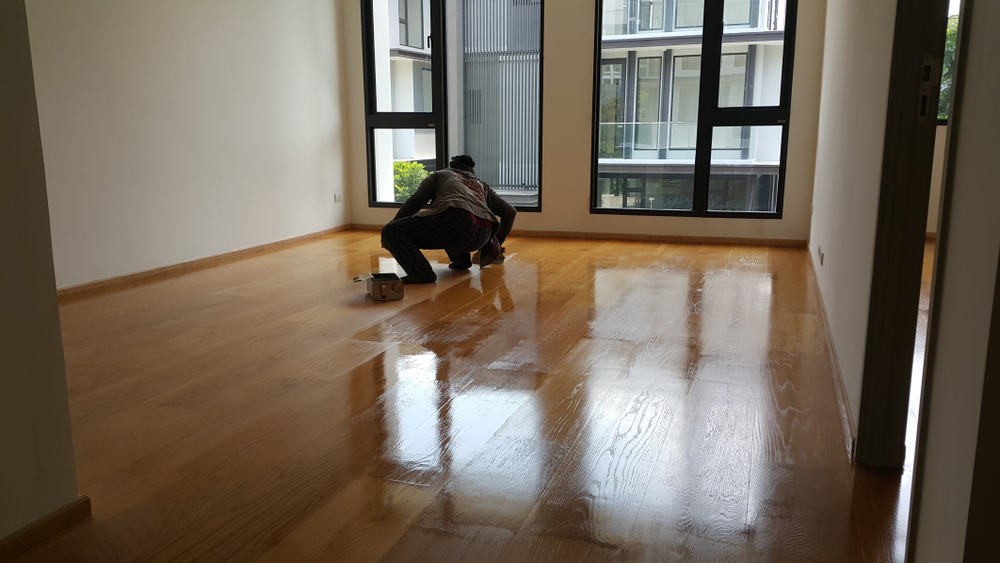
Engineered wood flooring is like solid wood. The difference is just in the manufacturing process. The base of engineered wood is layered with plywood, while the top is covered with natural wood. This combination makes engineered wood both cheaper and sturdier than solid wood.
Engineered wood comes in different variants, and can also be installed through various means. It can be glued down or nailed down the same way traditional wood flooring is done or can be installed atop a cork underlayer.
Pros:
- It mimics the look of solid wood, but at a cheaper rate.
- Engineered wood is less affected by changing weather patterns than solid wood.
- It is cheaper to install engineered wood than solid wood. The clickable type of flooring even gives you the option of installing it yourself.
Cons:
- It can scratch easily.
- There may be increased cost due to refinishing that needs to be done at least twice throughout the flooring.
Cost:
Engineered wood is a little cheaper than solid wood and can go for as low as $2 to $7 per square foot.
3. Vinyl Flooring
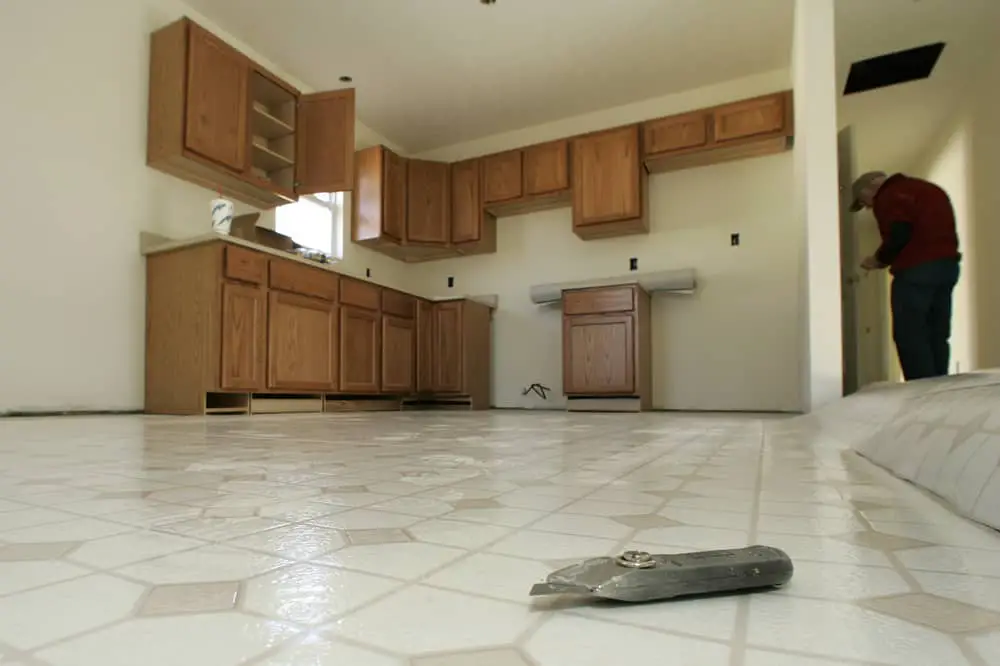
Another kitchen flooring idea to consider is vinyl flooring. This comes in tiles, sheets and luxury vinyl options. It is even usually cheaper than the hardwood for installation. Just like the hardwood also, it can be installed right on top of your subfloor.
Pros:
- The flooring is resilient. You do not have to worry about slipping.
- It is also quite easy to clean up after use.
Cons:
- It can get scratched somewhat easily. This means that you would have to consider the option of changing the flooring often.
Cost:
The prices of the different vinyl options vary. If you are looking to save cost, the peel-and-stick tile should be your best bet. Other inexpensive options include the sheet vinyl and peel-and-stick planks.
For DIY options, you might want to consider the luxury plank. The luxury plank is typically thicker than the standard vinyl tile, although that shouldn’t prove to be too much of a hassle.
Notably, however, standard vinyl tiles are sold for $1.50 to $2.00 per square foot. The more expensive options start from $3 and above for a square foot.
4. Ceramic Floor Tile
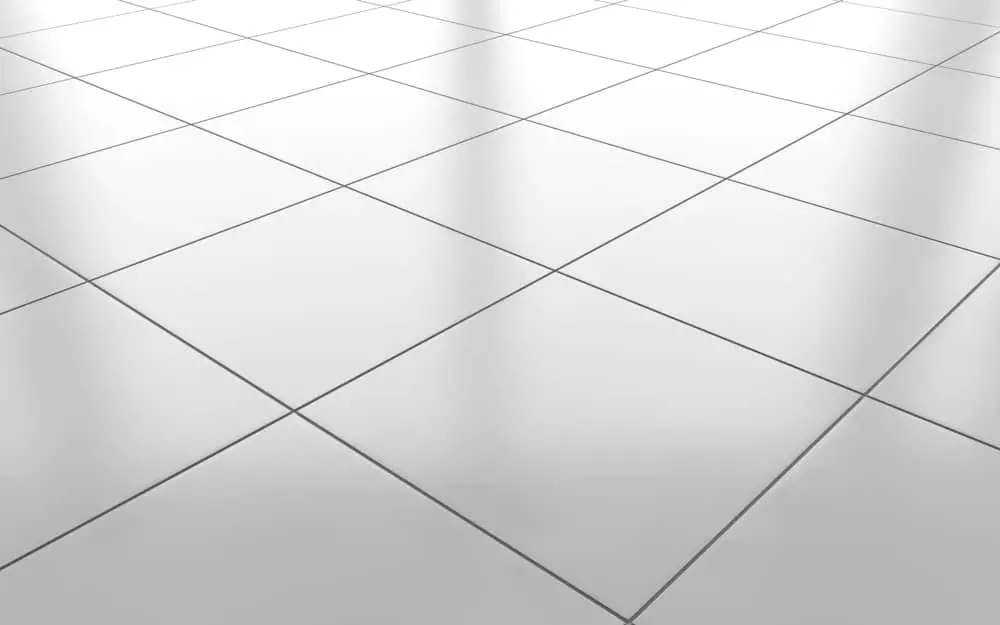
Of the different kitchen flooring ideas, ceramic tiles are perhaps the best investment you can make on your flooring. The major drawback to ceramic tiles is the grout lines in which grime can be stuck in, making it harder to clear.
Besides that, the surface is easy to wipe clean. It is relatively cheap to purchase and install, and it can last as long as the expensive tiles. Even for the grout lines, if properly sealed, there will be no problems associated with that too.
Pros:
- Ceramic tiles are one of the most elegant options for kitchen flooring.
- Generally, they are easy to manage and easy to clean.
- They last for long.
Cons:
- You may have to put on some footwear every time you enter your kitchen because ceramic tiles are often cold.
- The hard surface can be a disadvantage too; for example, kitchen utensils can break when they land on them.
- Additional materials may be needed for installation, increasing the overall cost.
- Installation is a little more complicated than the average.
Cost:
Before you consider installing ceramic tiles, you have to bear in mind that extra costs could come in the form of the expenses for thin-set adhesive, underlayment and grout.
The basic cost of a ceramic tile is about $0.50 per square foot. The more exquisite options go for $2 per square foot and above.
5. Laminate Flooring
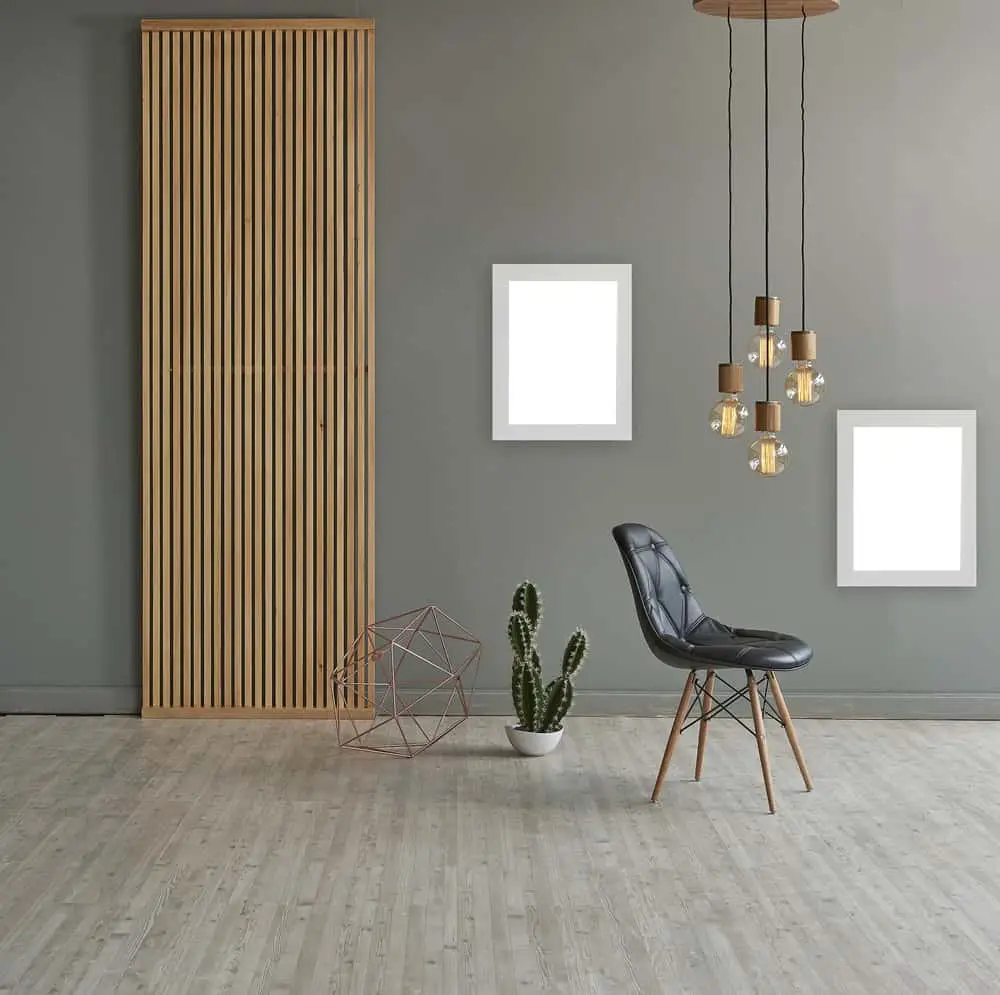
What is impressive about the laminate flooring is its ability to mimic even the most expensive flooring materials. The hard surface of the planks makes them resistant to scratches, increasing their life span considerably, although they could be susceptible to water damage.
This may prove a little problematic given that the flooring is intended to be used for your kitchen (a dripping kitchen faucet or a faulty kitchen sink can damage hundreds of dollars worth of flooring). However, there are water-resistant options, although those are slightly more pricey than the average.
Pros:
- As earlier mentioned, laminate flooring can be installed in such a way that it mimics more expensive floors. That can be quite useful for you.
- Laminate flooring is easy to install.
Cons:
- Moisture leakages can be a problem.
- You cannot clean it with wet mopping, which makes it harder to clean the floors.
- Installation costs may be increased when you consider the cost of underlayment and trim pieces.
Cost:
Standard flooring cost about $0.50 per square foot. For water-resistant variants, they can cost as much as $2 per square foot.
6. Linoleum
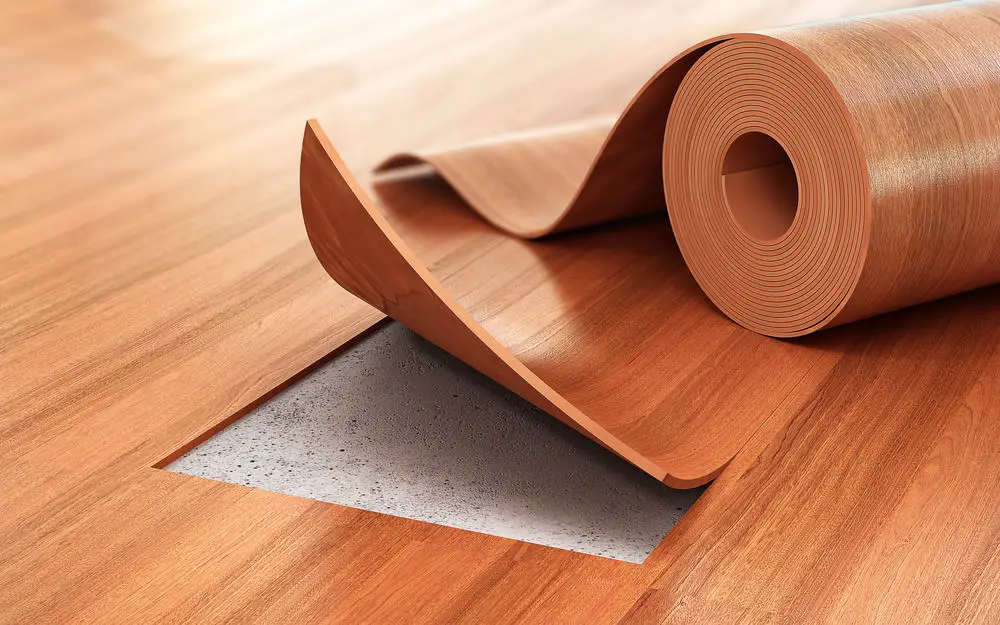
This is an example of flooring that has been around for ages. It is made from natural materials, linseed oil, and cork powder. It is making a natural comeback, after years of being jettisoned in favour of vinyl.
Pros:
- Durability: When compared with vinyl, linoleum comes out on top. With adequate care, it is expected to have a life-span of not less than 40 years.
- It is eco-friendly, so if you are concerned about the environment, linoleum is an excellent choice.
Cons:
- Generally, linoleum is durable, but it is susceptible to tear from sharp objects and heels of shoes.
- It may not be DIY-friendly because of its stiff nature.
- Linoleum is not water-resistant.
Cost:
Cost should be between $2 to $5 per square feet.
7. Bamboo
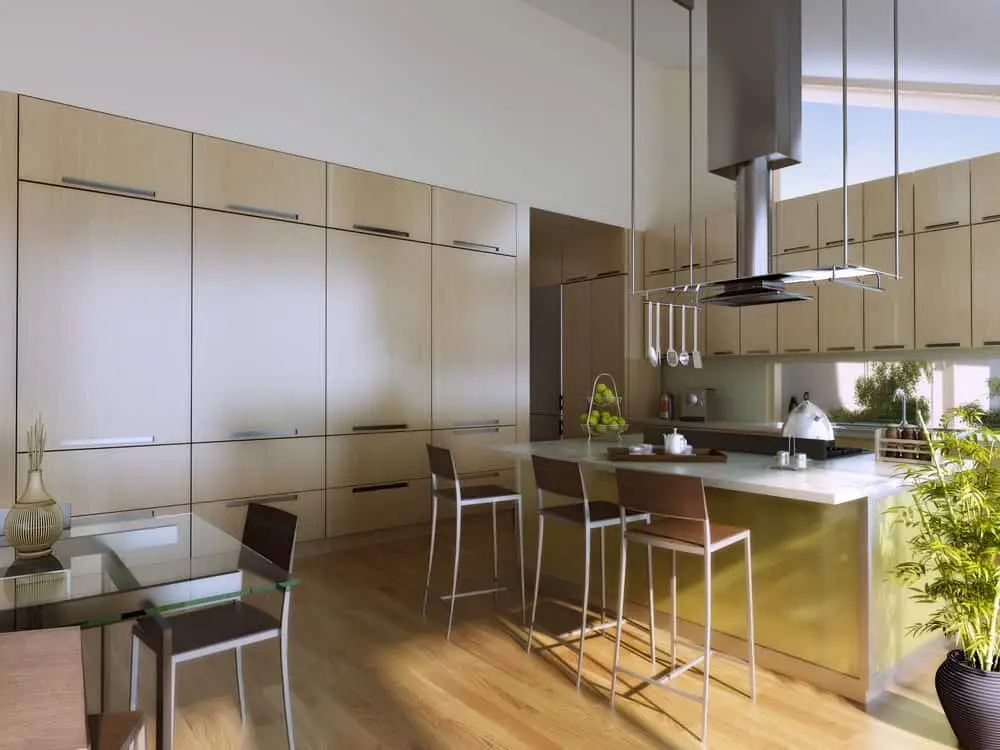
One of the advantages of using bamboo flooring is that it gives the look and feel of hardwood. It is also very eco-friendly, which has made it popular amongst eco-sensitive people. Bamboo comes in different types, the two most famous being the solid strips and the engineered planks.
Pros:
- Sturdiness: Bamboo flooring is sturdy and durable.
- It is easy to install.
- It is eco-friendly. Bamboo grows rather quickly and can thrive in a variety of climates. This increases its self-replenishing ability.
Cons:
- An argument against the eco-friendliness of bamboo is that farmers make use of pesticides and fertilizers when growing them, adding to the harms on the environment.
- Durability varies with the variety of bamboo purchased. If you buy cheap bamboo, it will scratch easily and may not last very long.
Cost:
You may want to budget between $3 to $8 per square foot. Also, factor in the price of installation.
8. Cork Flooring
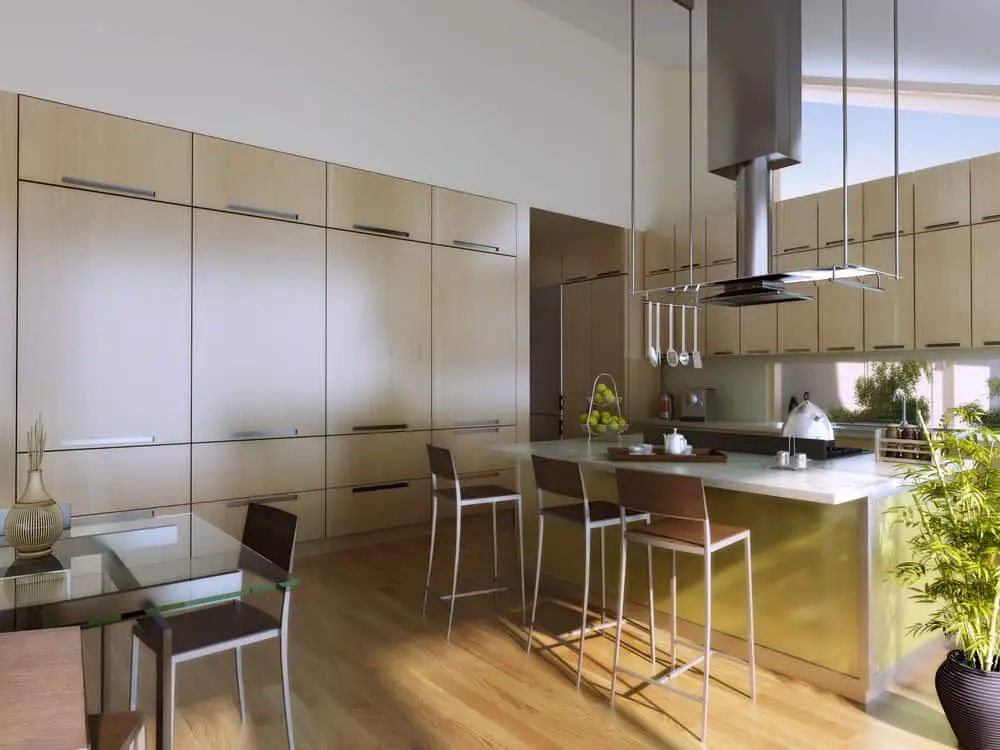
Admittedly, this may not be as inexpensive as the other kitchen flooring ideas. However, it makes up for its cost by the quality of its material, ease of installation and all-round comfort provided. Cork is installed much in the same way as laminate, although there is often no requirement for underlayment.
Pros:
- It is straightforward to install
- Cork flooring is very comfortable for the feet.
Cons:
- It is not as durable as some of the other options.
- It is not resistant to scratches from pets etc.
Cost:
For click-lock planks, the price usually starts within the range of $4 per square foot. The most expensive options start from around $5 per square feet.
9. Carpet
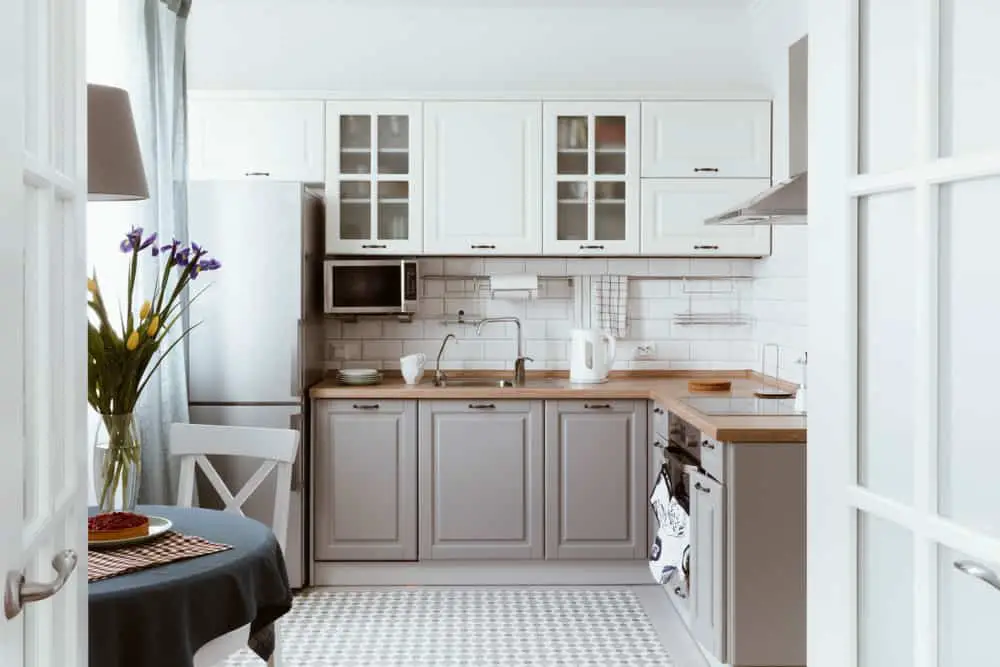
Although carpets are typically used in living rooms and bedrooms, they can still be used in your kitchen. You just have to make sure that you give extra care and attention to it during use.
Also, if you do not make use of your kitchen frequently, that can be a bonus. The types of carpets you can use for your kitchen include nylon, acrylic, and polyester.
Pros:
- Carpets are reasonably easy to install.
- They are also warm and comfortable underfoot.
- There is no need for a particular cleaning procedure; a wet kitchen towel will do the trick.
Cons:
- It is harder to clean carpets than hard flooring.
- It is also vulnerable to stains.
Cost:
The cost of carpets vary and can range from $2 to $12 per square foot.
10. Solid Oak Flooring
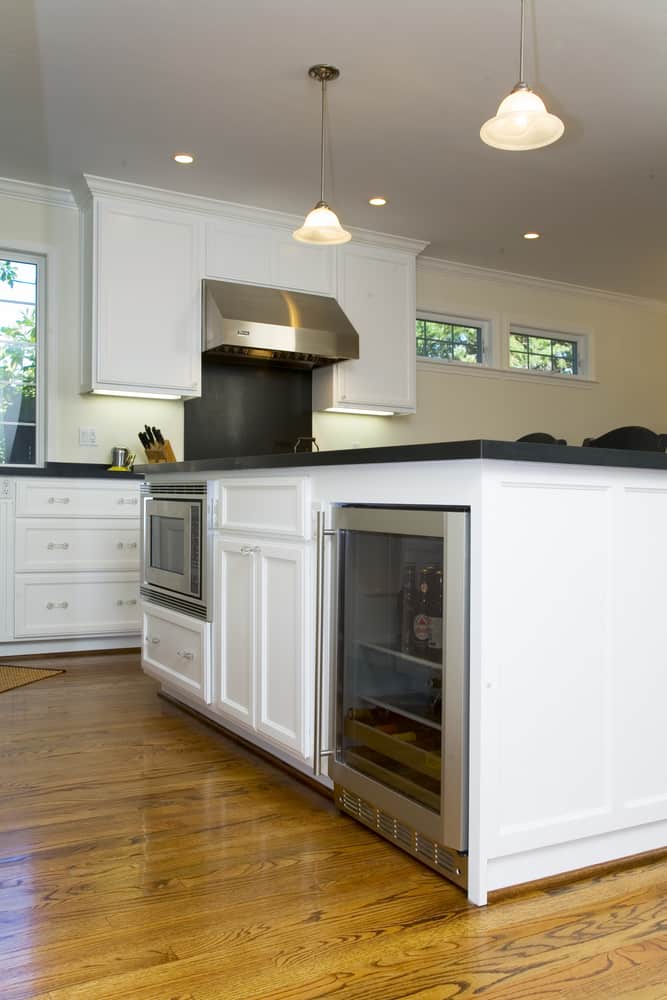
Solid oak gives a strong rustic feel to your kitchen, so if traditional designs appeal to your aesthetic senses, then you should check them out.
Also, if you have an old home and want to retain the charm of the building, solid oak can make sure that this is achieved for your kitchen. Even more impressive is the fact that it comes in a variety of colors ranging from white oaks to red oaks to espresso browns.
Pros:
- It is usually recommended for large kitchens.
- When you make use of a floating floor procedure, you can install the flooring yourself. Generally, what you need is a mallet and underlayment.
Cons:
- It may be more expensive than the average.
- It may not fit in with every home.
Cost:
The average cost for solid oak flooring is between $3 to $5.
11. Sandstone Tile
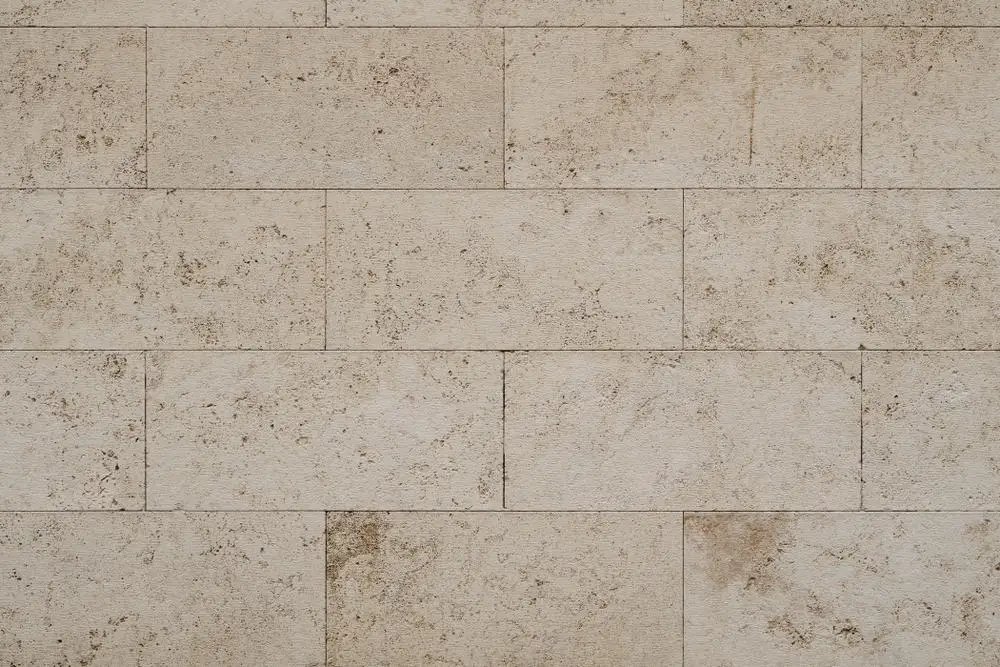
Sandstone is a natural stone and thus is quite hard, as hard as a rock, even. Because it is a natural stone, it can also be polished till it shines. When thoroughly polished, it gives off a glazed look. You have to be careful still because it can always be susceptible to scratches from shoes.
Pros:
- The tiles are eco-friendly.
- They can be easily replaced even when they get chipped.
Cons:
- They get discolored easily.
- The tiles are porous and might be problematic being used in your kitchen. You have to exercise excellent care to make sure moisture doesn’t seep into the cracks.
- It can get quite cold during winter.
Cost:
Sandstone tiles are a bit expensive and go for as high as $5 to $18 per square foot in some cases. Installation costs are usually about $7 per square feet.
12. Travertine Tile Flooring
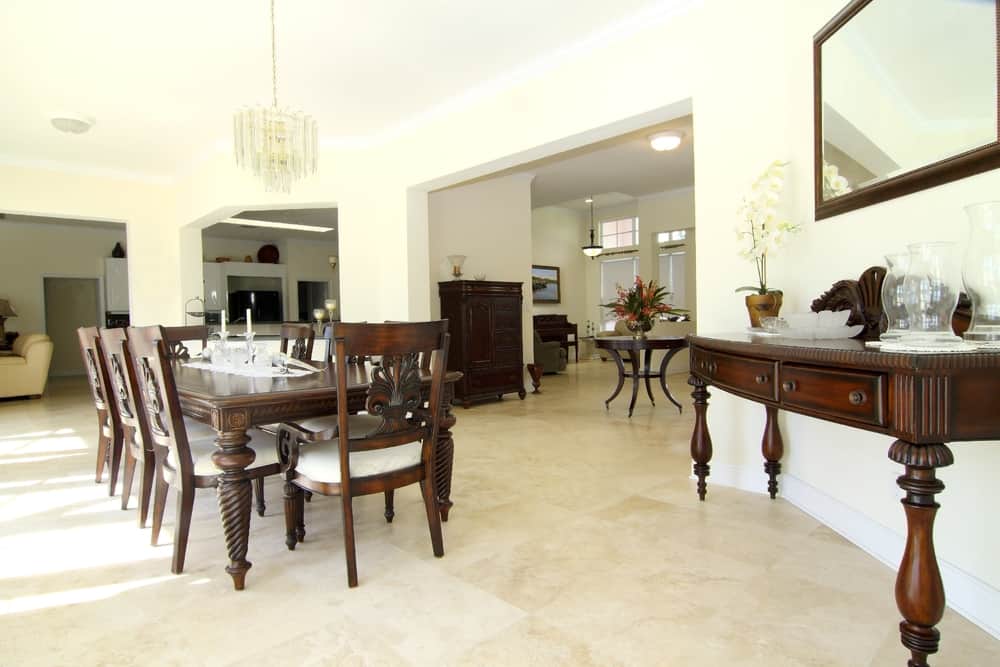
Travertine is a natural stone mined in several countries, including Turkey, China, Peru and Mexico. The looks of the tile may differ depending on the climatic condition of the area it is imported from. Travertine shades come in various types, such as beige, silver, mocha, golden and red tones.
Pros:
- It is not environmentally sensitive. Travertine can be used in any geographical location.
- It is water-resistant, so you do not have to worry about moisture seeping into the flooring.
- Travertine is durable and can withstand any form of pressure.
- It is cheaper than marble and stone and is easily replaceable.
Cons:
- Stains are harder to remove. More so, acidic cleaning agents cannot be used on it.
- Travertine is very porous.
Cost:
Travertine is sold for $5 and upwards per square feet.
Conclusion
The flooring for your kitchen is a big deal. Gone are the days when special attention is given to the bedroom and living room, with no attention paid to the kitchen.
This guide will provide you with different kitchen flooring ideas, pros, cons and costs for each. Hopefully, it will be a useful guide for when you want to make a decision.
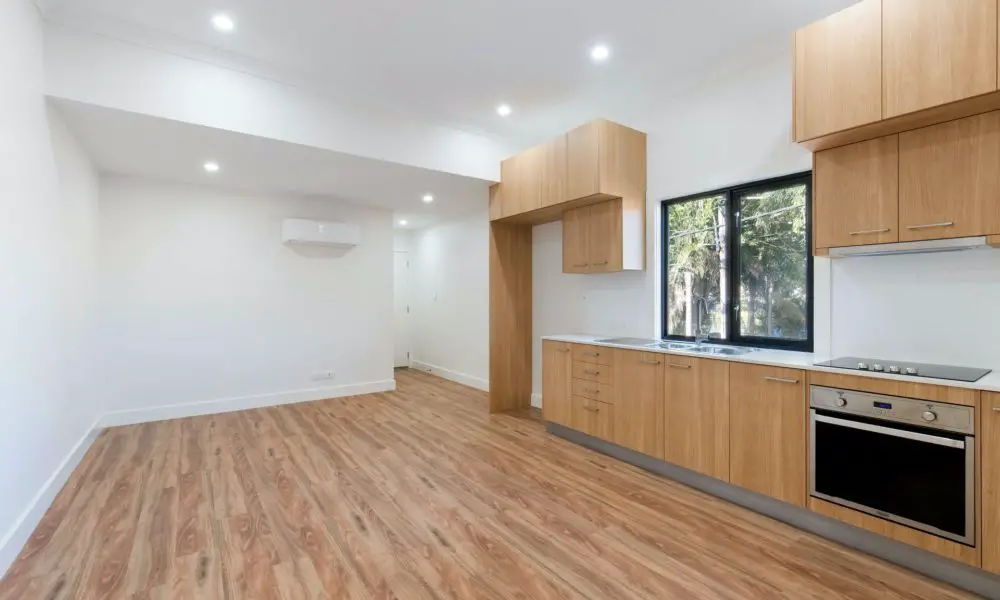
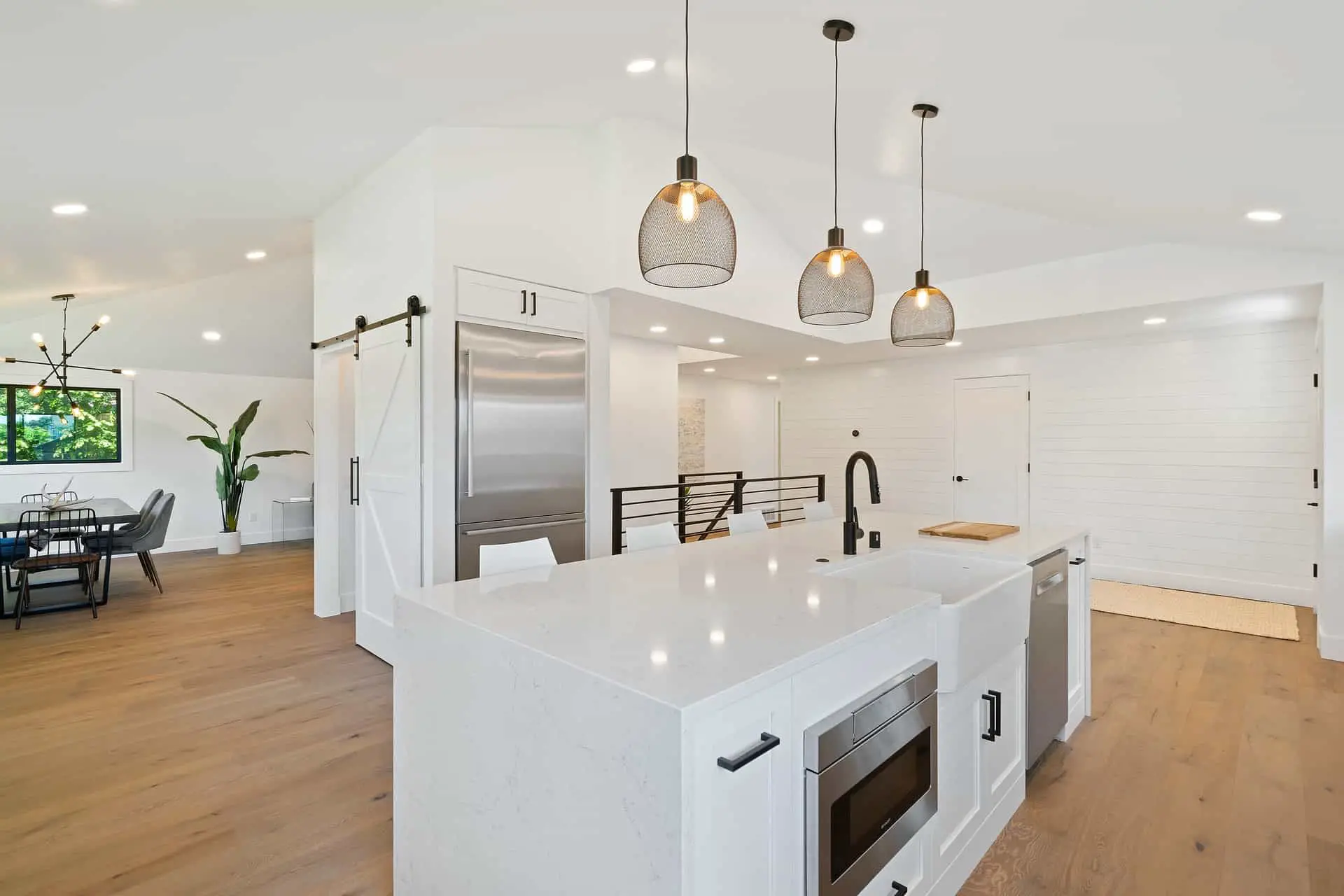
Hey Florence. I wanted to add a bit to your vinyl section, specifically about Luxury Vinyl Plank (LVP), mainly addressing your con. There are actually numerous options to buy strong LVP, you don’t have to buy the cheapest on the market. That’s an important distinction to make, as you get what you pay for. One of the best options that I’ve come across is the inclusion of aluminum oxide in finish of the plank, which will heavily strengthen the wear layer. This makes it extremely hard/tough, second only to a diamond. With this, it’s impervious to scratches and scuff marks. So I would definitely recommend spening the extra $.50 to $1 per board to completely avoid that con. I hope this helps!
Thanks, Daniel